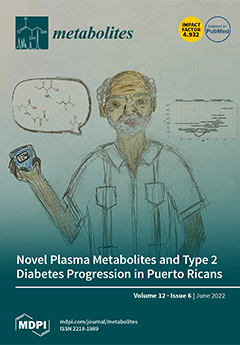Idiopathic thrombocytopenic purpura (ITP) is a common hematological disease and the abnormal platelet destruction in the spleen is a critical pathological mechanism for ITP. However, the metabolomic change in the spleen caused by ITP is still unclear. In the present study, the metabolomic
[...] Read more.
Idiopathic thrombocytopenic purpura (ITP) is a common hematological disease and the abnormal platelet destruction in the spleen is a critical pathological mechanism for ITP. However, the metabolomic change in the spleen caused by ITP is still unclear. In the present study, the metabolomic information of 18 ITP and 20 normal spleen samples were detected by using
1H high-resolution magic angle spinning NMR spectroscopy (
1H MAS NMR). Compared with normal spleen, the concentrations of acetate, alanine, glutamine, glycerol, isoleucine, lysine, valine, phenylalanine, leucine, and methanol in ITP spleen tissue were elevated and 3-hydroxybutyric acid, ascorbate, asparagine, ethanol, glycogen, low-density lipoprotein, malonate,
myo-inositol, glycerophosphocholine, pyroglutamate, and taurine were decreased. Amino acids metabolic pathways, such as branched-chain amino acids pathway, were identified as the main involved pathways based on enrichment analysis. The decrease in taurine level in the spleen was the most obvious metabolic signature involving ITP with high sensitivity and specificity to distinguish the spleen of ITP from the normal (CI: 0.825–0.982). Notably, the level of taurine in the spleen was negatively correlated with the efficacy of splenectomy (
r = 0.622,
p = 0.006). Collectively, the data from our study revealed previously unknown ITP-related metabolomic changes in the spleen and found a potential diagnostic and efficacy-predictive biomarker for ITP treatment.
Full article






